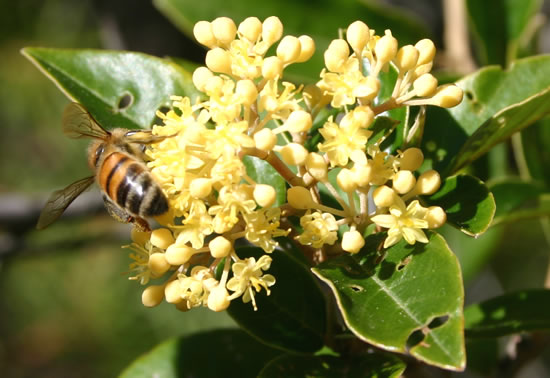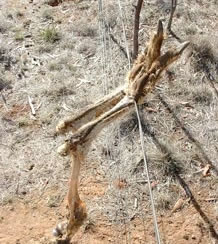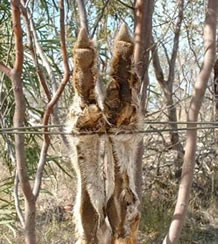Colony collapse disorder

Mystery of the disappearing bees: Solved!
Honey bees are widespread and are bred commercially for their abilities to produce honey and pollinate crops. Over the last 15 years, however, there has been increasing observations of bees disappearing in large numbers.
Christened “Colony collapse disorder” (CCD) with losses of between 29 and 36 percent in a year the concern economically, because many agricultural crops worldwide are pollinated by bees; and ecologically, because of the major role that bees play in the reproduction of plant communities in the wild.
There have been many theories:
- Stress and Diet
- Radiation from Mobile Phones
- Genetically Modified Food
- Pesticides
- Global Warming
- Abundance of bacteria
- Viruses
- A specific fungal disease
CCD has kept scientists busy and now there are three new studies pointing an accusing finger at a culprit that many have suspected all along, a class of pesticides known as neonicotinoids.
Wikipedia shows that Neonicotinoids are a class of neuro-active insecticides chemically related to nicotine. The development of this class of insecticides began with work in the 1980s by Shell and the 1990s by Bayer. The neonicotinoids were developed in large part because they show reduced toxicity compared to previously used organophosphate and carbamate insecticides. Most neonicotinoids show much lower toxicity in mammals than insects, but some breakdown products are toxic.
Neonicotinoids are the first new class of insecticides introduced in the last 50 years, and the neonicotinoid imidacloprid is currently the most widely used insecticide in the world.
An abstract from the report “A Common Pesticide Decreases Foraging Success and Survival in Honey Bees” Published Online 29 March, 2012 and on Science Journal website on 20 April, 2012 states:
Nonlethal exposure of honey bees to thiamethoxam (neonicotinoid systemic pesticide) causes high mortality due to homing failure at levels that could put a colony at risk of collapse. Simulated exposure events on free-ranging foragers labeled with a radio-frequency identification tag suggest that homing is impaired by thiamethoxam intoxication. These experiments offer new insights into the consequences of common neonicotinoid pesticides used worldwide.
The German chemical giant Bayer has come out in defence of its product and claims that the commonly used crop pesticide is not responsible for the global decline of bees. According to Bayer, the research is “factually inaccurate and seriously flawed, both in its methodology and conclusions”.
A second Science paper on Science looked at neonicotinoid pesticides’ effect on bumblebees, which have also gone into severe decline. The researchers subjected bumblebee colonies to “field-realistic levels of the neonicotinoid imidacloprid” and then “allowed them to develop naturally under field conditions.” The result: “Treated colonies had a significantly reduced growth rate and suffered an 85% reduction in production of new queens.” Their conclusion: “Given the scale of use of neonicotinoids, we suggest that they may be having a considerable negative impact on wild bumble bee populations across the developed world.”
In a third study, published in the American Chemical Society’s Environmental Science & Technology journal, researchers looked at what happens to bees when farmers plant treated seeds. Since seed coating with neonicotinoid insecticides was introduced in the late 1990s, European beekeepers have reported severe colony losses in the period of corn sowing. When foraging bees are exposed to neonic-containing dust the authors found “lethal effects compatible with colony losses phenomena observed by beekeepers.”
An abstract from this third study, “Assessment of the environmental exposure of honeybees to particulate matter containing neonicotinoid insecticides coming from corn coated seeds“, published 17 Feb, 2012 states:
As a consequence, seed-coating neonicotinoid insecticides that are used worldwide on corn crops have been blamed for honeybee decline. In view of the currently increasing crop production, and also of corn as a renewable energy source, the correct use of these insecticides within sustainable agriculture is a cause of concern. In this paper, a probable–but so far underestimated–route of environmental exposure of honeybees to and intoxication with neonicotinoid insecticides, namely, the atmospheric emission of particulate matter containing the insecticide by drilling machines, has been quantitatively studied. Using optimized analytical procedures, quantitative measurements of both the emitted particulate and the consequent direct contamination of single bees approaching the drilling machine during the foraging activity have been determined. Experimental results show that the environmental release of particles containing neonicotinoids can produce high exposure levels for bees, with lethal effects compatible with colony losses phenomena observed by beekeepers.
Both Germany and France banned neonicotinoids until further study, the rest of the world barely even blinked as more and more bees died. On 22 August, 2012 the Australian Pesticides and Veterinary Medicines Authority (APVMA) made provided the following media release:
22 August 2012
In Europe and the USA there have been concerns for some time about the potential for insecticides to impact on the health of honey bees and other insect pollinators. Of particular interest is whether a particular class of insecticides, the neonicotinoids, might have sub-lethal effects on bees, which may reduce their ability to pollinate plants and produce honey.
These concerns have created some anxiety among Australian beekeepers who have noted that many of the neonicotinoids used overseas are also used here.
Accordingly, the APVMA has commenced an investigation of the scientific literature to determine whether:
- use of neonicotinoids in Australia presents any more of a risk to honey bee health than other pesticides that have been in use for many years
- current APVMA data requirements for testing of insecticides are adequate to address any potential effects of neonicotinoids on bees.
The outcomes of their investigation will be published by early 2013. Given the bans already in place in other countries surely this time frame can hardly be considered acceptable.
If you feel strongly enough about this issue to request APVMA to address this issue in a shorter time frame then contact the Chief Regulatory Scientist (Pesticides) on Phone: +61 2 6210 4701 or email at communications@apvma.gov.au
The Kritic has approached them for a comment on the timeframe and will provide an update to this story if and when I get a response.


